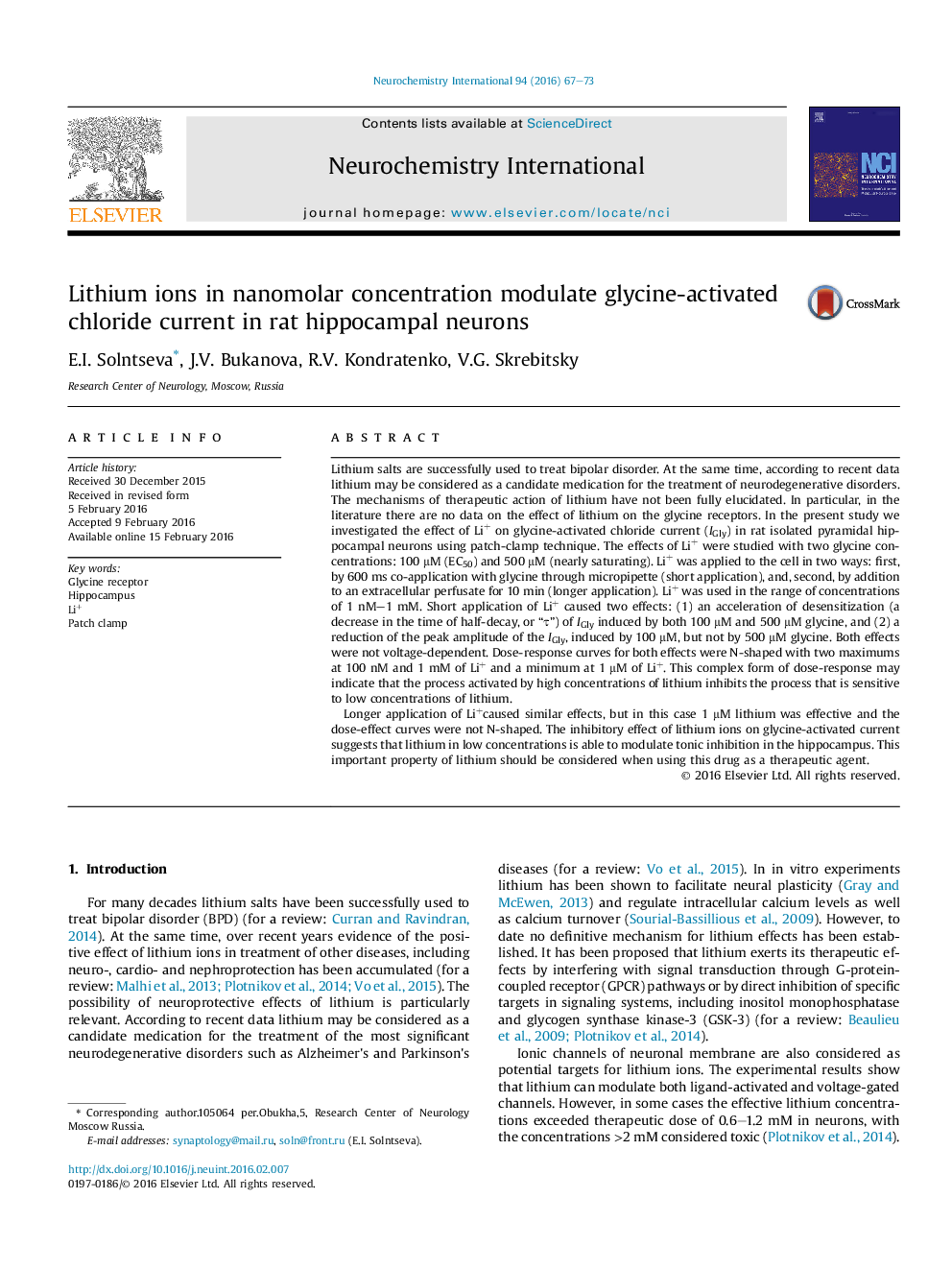| کد مقاله | کد نشریه | سال انتشار | مقاله انگلیسی | نسخه تمام متن |
|---|---|---|---|---|
| 2200359 | 1551281 | 2016 | 7 صفحه PDF | دانلود رایگان |
• The effects of Li+ on glycine-activated current (IGly) were studied using patch-clamp.
• Li+ caused two effects on the IGly with threshold effective concentration of 10 nM.
• An acceleration of desensitization of the IGly was noncompetitive.
• A reduction of the peak amplitude of the IGly was competitive.
• Dose-response relationships were different at short and long applications of Li+.
Lithium salts are successfully used to treat bipolar disorder. At the same time, according to recent data lithium may be considered as a candidate medication for the treatment of neurodegenerative disorders. The mechanisms of therapeutic action of lithium have not been fully elucidated. In particular, in the literature there are no data on the effect of lithium on the glycine receptors. In the present study we investigated the effect of Li+ on glycine-activated chloride current (IGly) in rat isolated pyramidal hippocampal neurons using patch-clamp technique. The effects of Li+ were studied with two glycine concentrations: 100 μM (EC50) and 500 μM (nearly saturating). Li+ was applied to the cell in two ways: first, by 600 ms co-application with glycine through micropipette (short application), and, second, by addition to an extracellular perfusate for 10 min (longer application). Li+ was used in the range of concentrations of 1 nM–1 mM. Short application of Li+ caused two effects: (1) an acceleration of desensitization (a decrease in the time of half-decay, or “τ”) of IGly induced by both 100 μM and 500 μM glycine, and (2) a reduction of the peak amplitude of the IGly, induced by 100 μM, but not by 500 μM glycine. Both effects were not voltage-dependent. Dose-response curves for both effects were N-shaped with two maximums at 100 nM and 1 mM of Li+ and a minimum at 1 μM of Li+. This complex form of dose-response may indicate that the process activated by high concentrations of lithium inhibits the process that is sensitive to low concentrations of lithium.Longer application of Li+caused similar effects, but in this case 1 μM lithium was effective and the dose-effect curves were not N-shaped. The inhibitory effect of lithium ions on glycine-activated current suggests that lithium in low concentrations is able to modulate tonic inhibition in the hippocampus. This important property of lithium should be considered when using this drug as a therapeutic agent.
Journal: Neurochemistry International - Volume 94, March 2016, Pages 67–73
